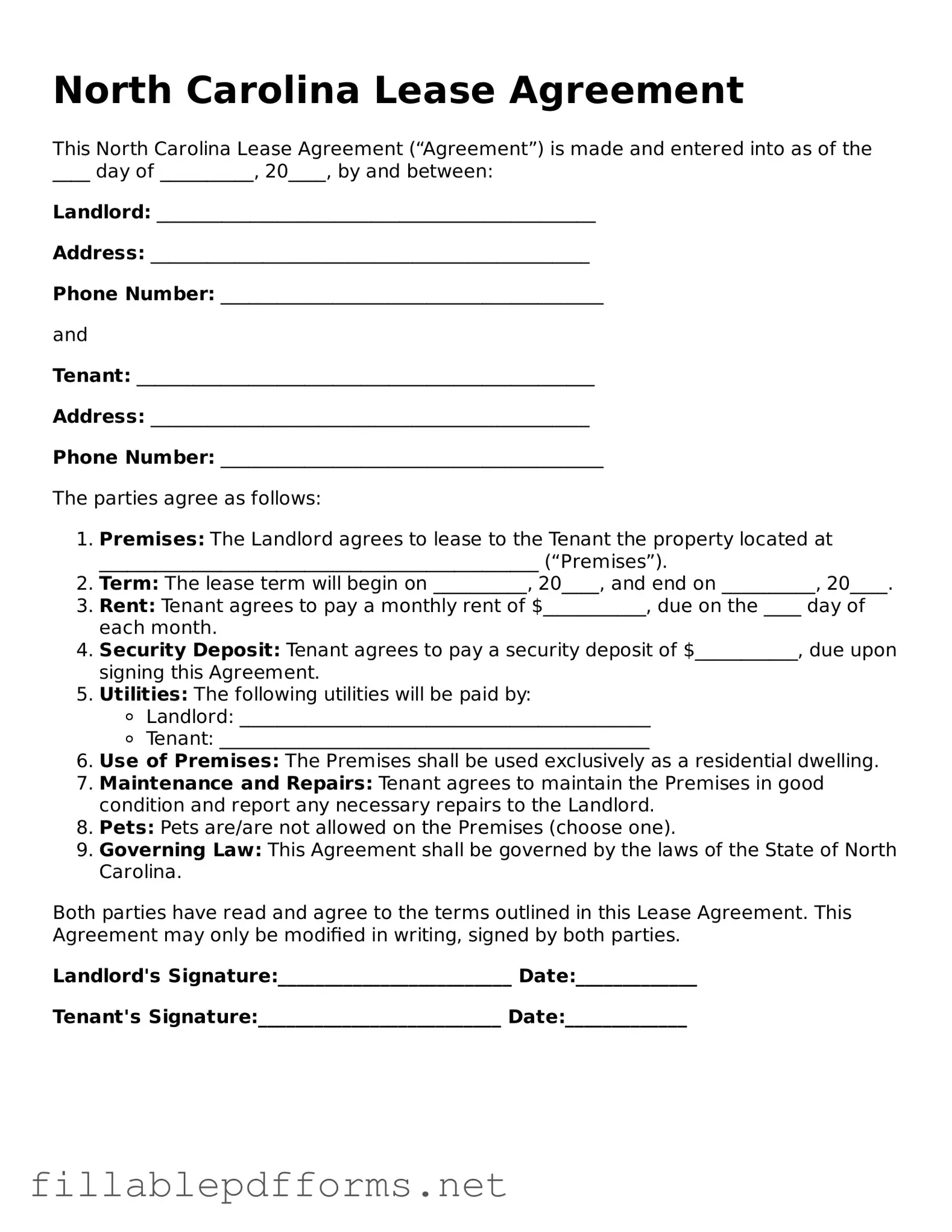In North Carolina, a lease agreement serves as a vital document that outlines the relationship between landlords and tenants, establishing clear expectations and responsibilities for both parties. This legally binding contract typically includes essential details such as the rental amount, duration of the lease, and the specific terms regarding security deposits and maintenance obligations. It also addresses important issues like late payment penalties, rules about pets, and guidelines for terminating the lease. Understanding these components is crucial for anyone entering into a rental agreement, as they help prevent misunderstandings and disputes down the line. By clearly defining the rights and duties of each party, the North Carolina Lease Agreement form not only protects the interests of landlords but also ensures that tenants have a secure and comfortable living environment. Whether you are a first-time renter or a seasoned landlord, familiarizing yourself with this form can lead to a smoother rental experience.
